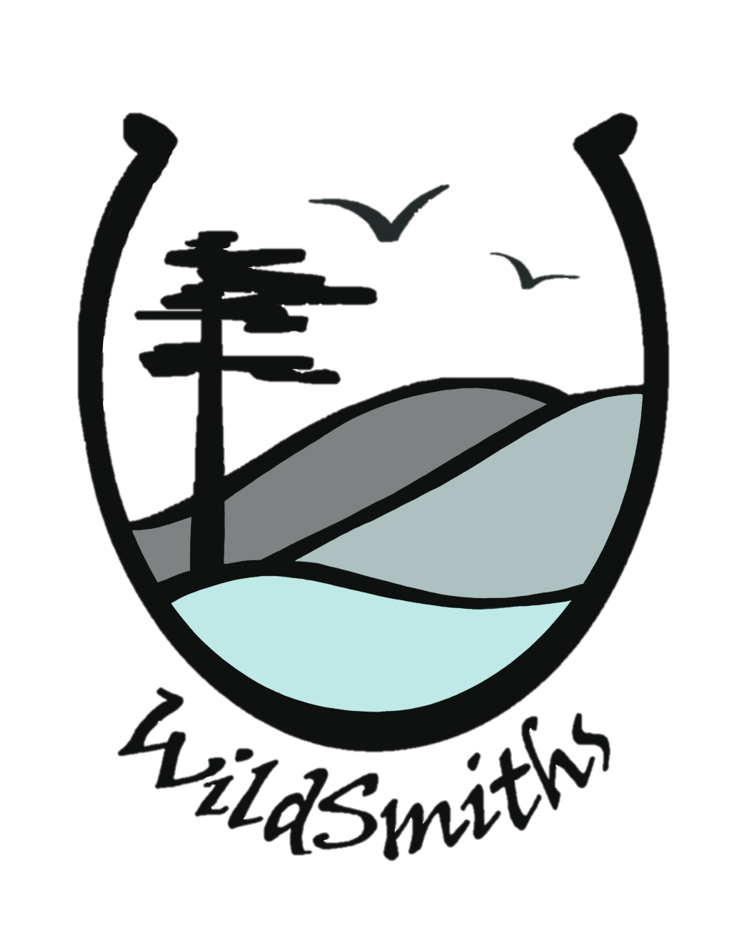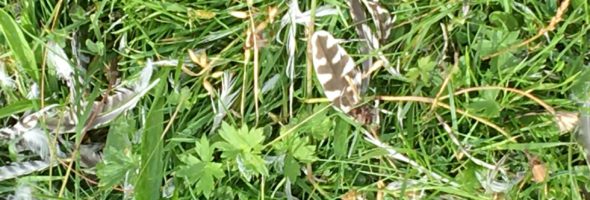Sometimes an event happens and a story is presented ready made. On other occasions, it takes time to emerge as the pieces slowly fall into place, like a good detective story. That was the case here but, as the pieces fell, they revealed, like an upside down jigsaw puzzle, an image the precise opposite of what I was expecting.
It all began with a breathless text message from a client: “Do you have a contact for the local RSPB? There’s an injured bird of prey along the stone wall at the base of Ben Feall.”
Now, I know the RSPB do not get involved in animal rescues, but we were not far away and out of a sense of duty to our client, we headed out to the spot, armed with gloves and a blanket, but with little expectation of finding anything. Just as we thought, there was nothing to be seen but a few scattered feathers that I was fairly confident weren’t from a bird of prey. They looked like they’d come from a juvenile gull, perhaps. So no mystery here, and no blog to be written, just a case of mistaken identity and one less gull on the island.
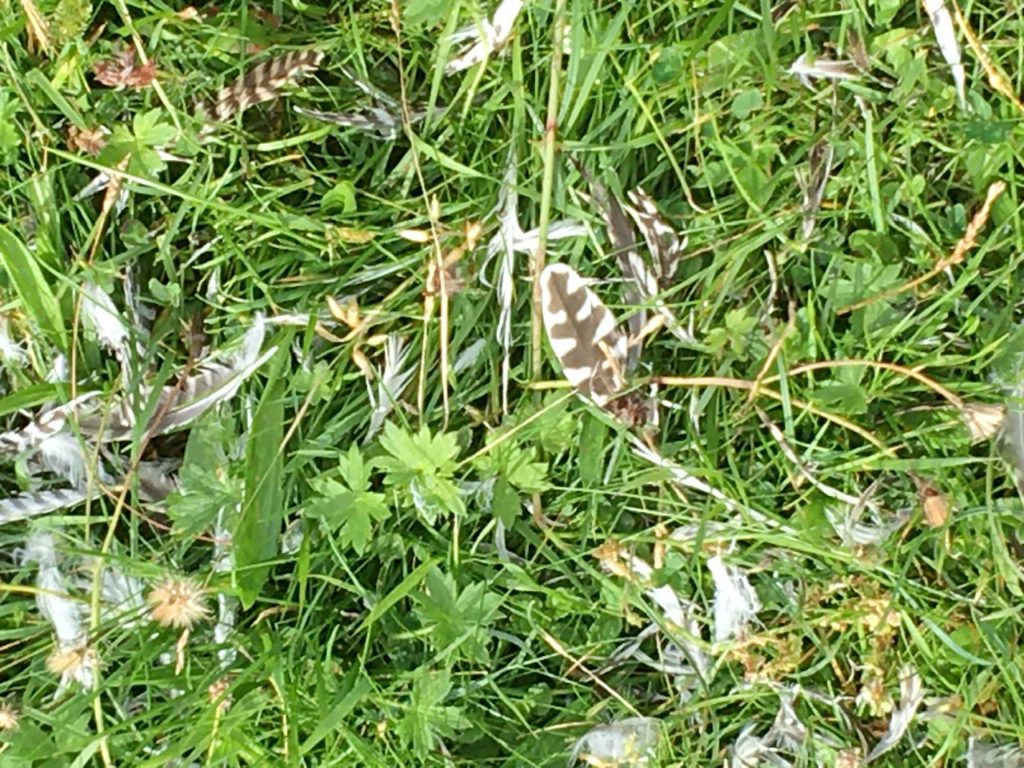
Then the client provided some new evidence – some photos of the bird that they’d taken on their phone at close range. They also gave us some further details of the scene: the bird had been unable to fly, was holding its wings oddly and had been wailing piteously. I downloaded the photos, confident that I was about to see the aforementioned gull. I was taken aback when the photos revealed a large peregrine falcon.
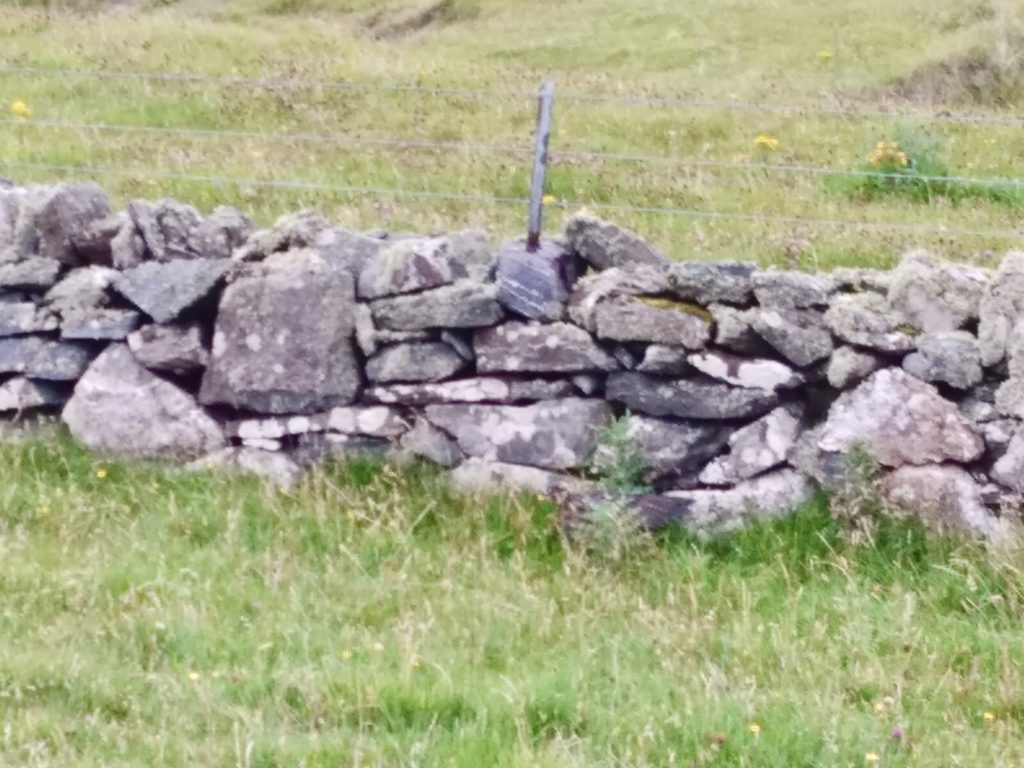
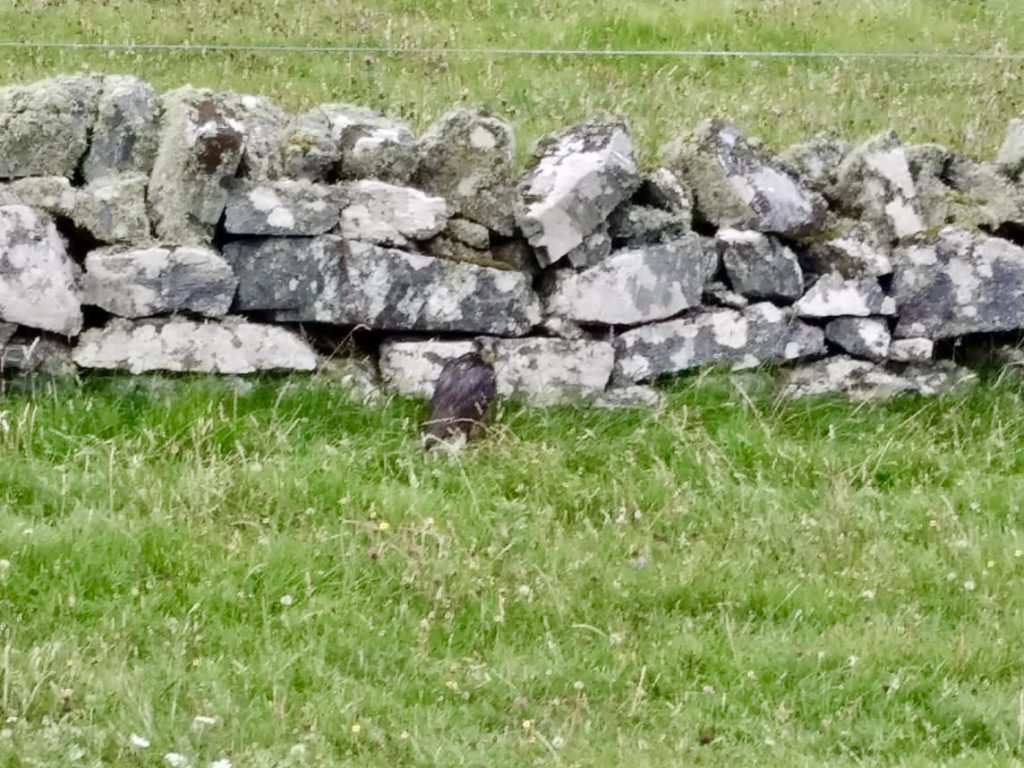
So, they were right about the bird of prey; and it seemed the remains of our gull were a red herring – it was a complete coincidence that these feathers should have been at the spot we had been directed to. But we were none the wiser as to what had happened to the falcon. Had it recovered and flown off? Or did it fall prey to whatever had taken the gull? We would never know.
A few days later, I was sorting through some photos on my camera when I came across a few shots of the gull feathers. They were quite striking – one in particular with a dark oak leaf pattern against a white background. I wondered if, from these, I might be able to identify the species of gull involved: there are at least six to choose from on Coll, but worth a brief diversion. Accordingly, I began to flick through images online but none of them matched up.
So I shared the images with a friend who is an expert bird illustrator and, I figured, would be more familiar than me with the intricacies of individual bird feathers. He immediately confirmed that they were not from a bird of prey. Nor were they from a gull – I had been fishing in the wrong part of the book. He suggested that I look at something like curlew. I’m sure he meant “they’re curlew feathers” but wanted to correct me gently.
So I took a look at some curlew feather images and – bang! – there they were. Spot on!
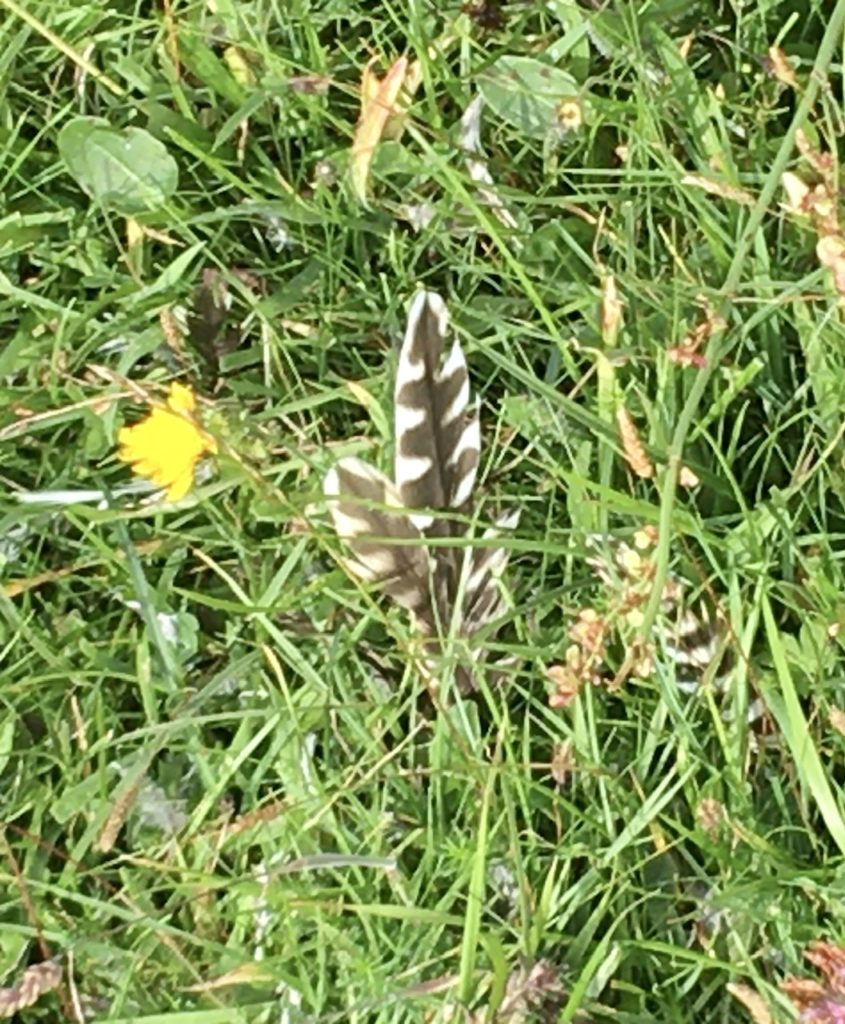
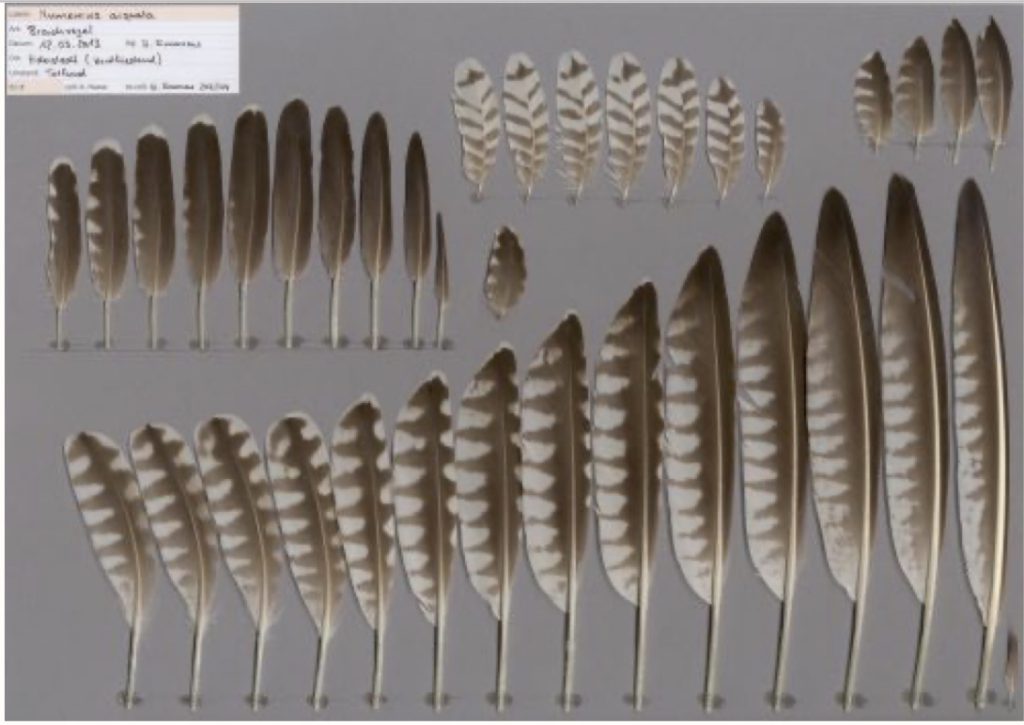
So now I looked again at the peregrine photos and a new possibility began to dawn on me. Perhaps the presence of these feathers at this location was no mere coincidence. Perhaps they were part of the ‘injured bird of prey’ story after all.
The alternative narrative that now emerged saw the peregrine not as victim but as victor. What if our client had stumbled upon the bird of prey at the moment of a kill – with the curlew in its talons. Suddenly there are these people getting too close for comfort. What to do? Fly and abandon the hard-won supper? Or hunker down, use your wings to hide the food, and drive the interlopers off with warning cries? Look at those pictures of the scene again: that piercing gaze, those raised wings. No vulnerable victim but a magnificent and immovable authority.
Perhaps? We’ll never know for sure of course but, with a little detective work and the help of an expert witness, the mystery of the bird and the feathers just might have been solved.
(With thanks to our clients Amanda and Graham for permission to tell their story and use their photos)
WildSmiths
September 2020
